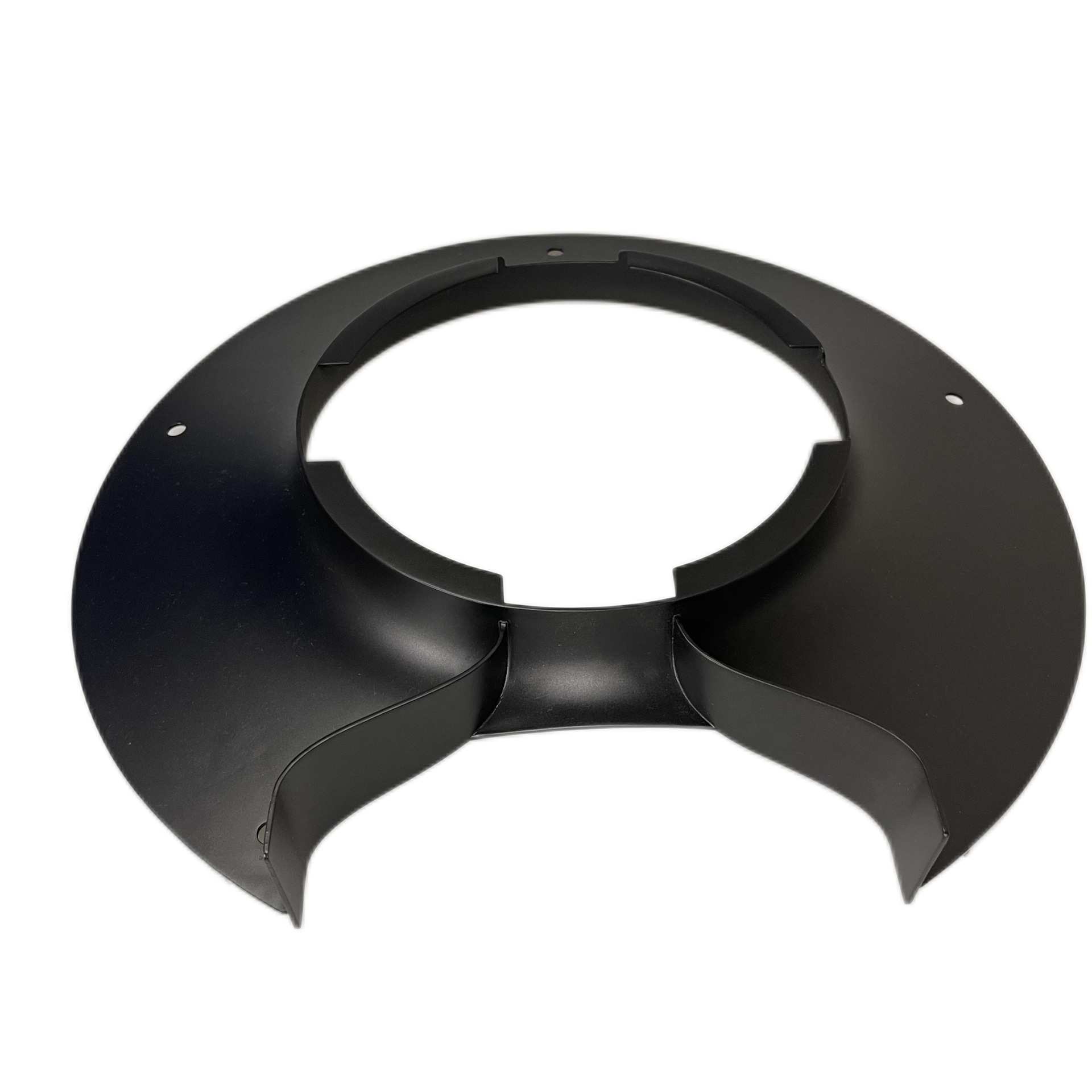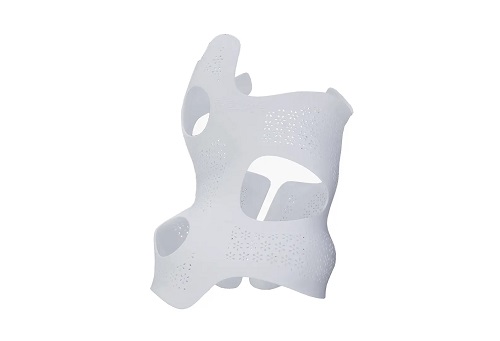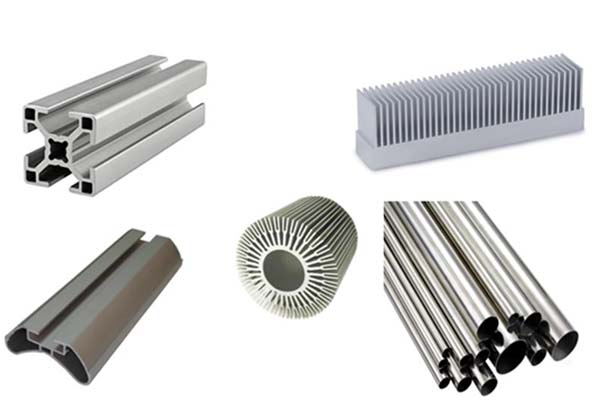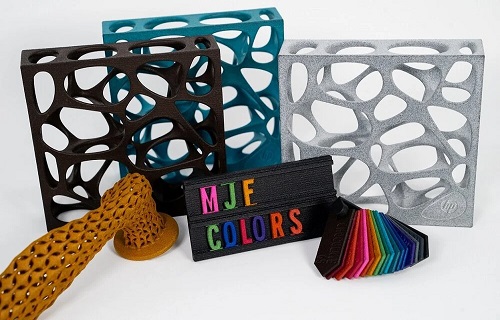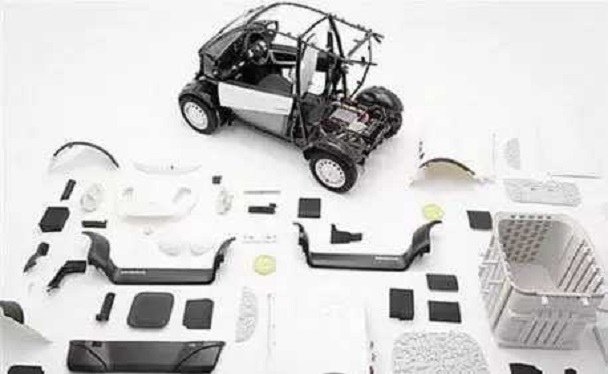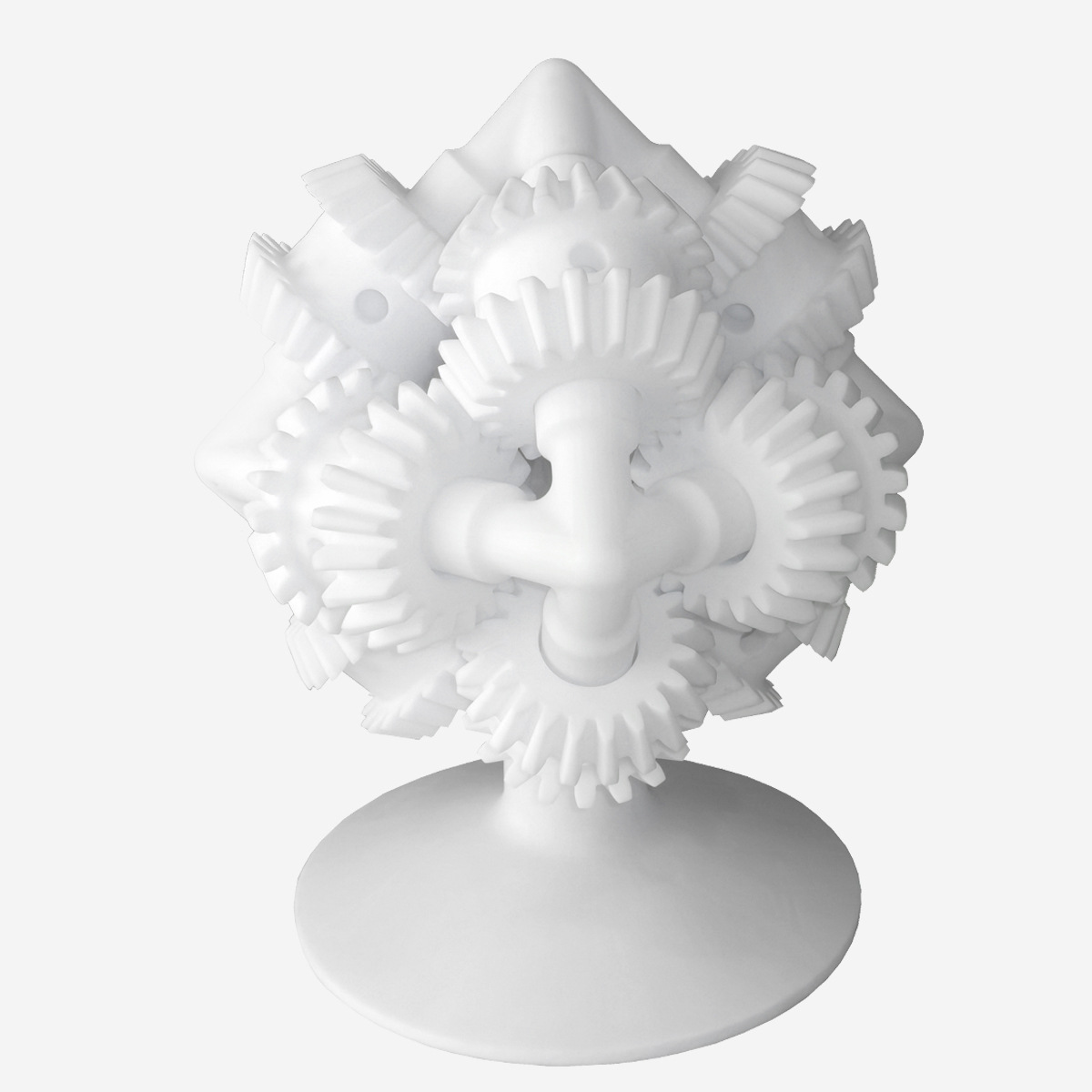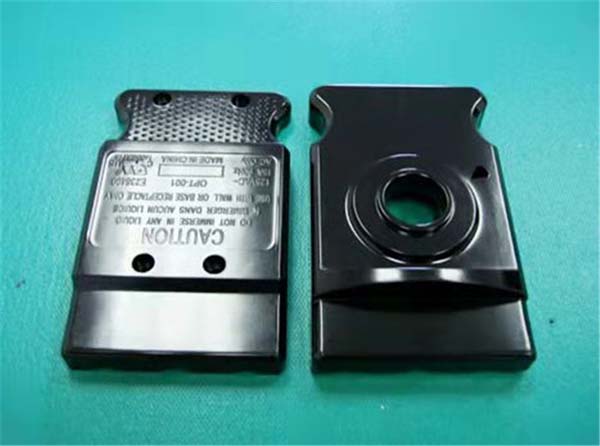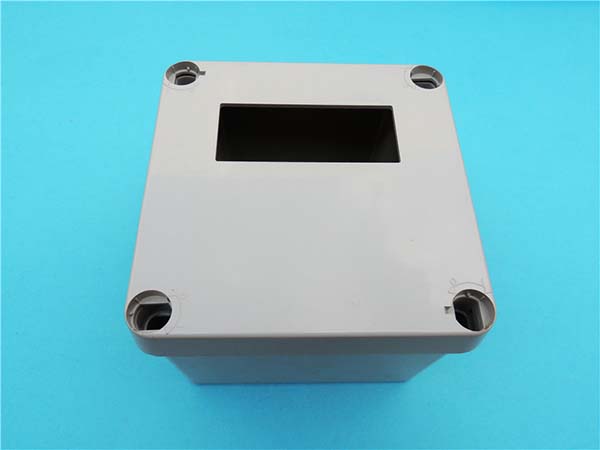Yigu: In the dynamic landscape of modern manufacturing, 3D additive manufacturing has emerged as a revolutionary force, transforming the way products are designed, prototyped, and produced. However, like any cutting - edge technology, it comes with its own set of challenges and considerations. Many professionals and enthusiasts find themselves grappling with questions such as which 3D printing process is best suited for their specific project, what materials are available, and how to overcome the high costs associated with this technology. This comprehensive guide aims to demystify 3D additive manufacturing, providing in - depth insights into its technology, materials, applications, advantages, challenges, and the software and design tools that drive it.
1. Technology & Processes
Fused Deposition Modeling (FDM)
FDM is one of the most widely used 3D printing processes. It works by heating a thermoplastic filament, such as PLA (Polylactic Acid) or ABS (Acrylonitrile Butadiene Styrene), until it becomes molten. The extruder then deposits the material layer by layer, following the instructions from a digital 3D model. FDM printers are relatively affordable, making them popular among hobbyists and small - scale manufacturers. They are also capable of printing large objects, although the surface finish may be somewhat rough compared to other processes. For example, in a DIY electronics project, an FDM - printed enclosure can be quickly fabricated to house circuit boards.
Stereolithography (SLA)
SLA is a precision 3D printing technology that uses a UV laser to cure a liquid photopolymer resin layer by layer. As the laser traces the cross - section of the 3D model onto the surface of the resin, the resin solidifies, forming a thin layer. The build platform then lowers, and a new layer of resin is spread, repeating the process until the object is complete. SLA offers extremely high precision and smooth surface finishes, making it ideal for applications such as jewelry making, dental prosthetics, and intricate model building. A jewelry designer might use SLA to create a detailed mold for a complex pendant design.
Selective Laser Sintering (SLS)
SLS employs a high - power laser to selectively sinter powdered materials, such as nylon, polyamide, or metal powders. The laser heats the powder particles to their melting point, fusing them together to form a solid layer. After each layer is sintered, a new layer of powder is spread, and the process continues. SLS has the advantage of not requiring support structures, as the unsintered powder supports the part during printing. This makes it suitable for creating complex, interlocking geometries. Automotive manufacturers often use SLS to produce lightweight, functional prototypes of engine components.
Digital Light Processing (DLP)
DLP is similar to SLA in that it uses a light - based curing process for photopolymer resins. However, instead of a laser, DLP uses a digital micromirror device (DMD) to project an entire cross - section of the 3D model onto the resin surface at once. This results in faster printing times compared to SLA, especially for large or complex parts. DLP is commonly used in the production of high - volume, detailed items such as consumer goods prototypes and small - scale production runs of plastic parts. A toy company might use DLP to quickly produce multiple prototypes of a new action figure design.
Binder Jetting
Binder jetting is a process that involves depositing a liquid binder onto a bed of powder material, such as sand, metal, or ceramic powder. The binder selectively bonds the powder particles together, forming the desired shape layer by layer. After printing, the part may require additional post - processing, such as sintering for metal or ceramic parts, to increase its strength. Binder jetting is known for its ability to produce large - scale objects and is used in industries like construction (for 3D - printed building components) and foundry work (for creating sand molds).
Material Extrusion
Material extrusion encompasses processes where materials are pushed or extruded through a nozzle to build up a 3D object. FDM is a well - known form of material extrusion, but other variations exist. This process is versatile and can use a wide range of materials, including thermoplastics, composites, and even some biodegradable materials. In the production of custom - made furniture prototypes, material extrusion can be used to create unique, organic - shaped components.
Powder Bed Fusion
Powder bed fusion is an umbrella term that includes processes like SLS and Selective Laser Melting (SLM). In these processes, a heat source (such as a laser) is used to melt and fuse powder particles in a powder bed to create a 3D object. Powder bed fusion is highly suitable for producing complex, high - performance parts, especially in the aerospace and medical industries, where materials like titanium and cobalt - chromium alloys are often used.
Direct Energy Deposition
Direct energy deposition involves using a high - energy source, such as a laser or an electron beam, to melt and deposit materials, typically metal wires or powders, directly onto a substrate. This process can be used for additive manufacturing as well as for repairing or coating existing parts. It is often used in the aerospace industry to build or repair large, complex metal components, such as turbine blades.
| Process | Working Principle | Ideal Materials | Typical Applications |
| FDM | Extrusion of molten thermoplastic filament | PLA, ABS | DIY projects, low - cost prototypes |
| SLA | UV laser curing of liquid photopolymer resin | Photopolymers | Jewelry, dental prosthetics |
| SLS | Laser sintering of powder materials | Nylon, polyamide, metal powders | Automotive prototypes, complex geometries |
| DLP | Projection of light to cure resin | Photopolymers | High - volume consumer goods prototypes |
| Binder Jetting | Deposition of binder on powder bed | Sand, metal, ceramic powders | Construction components, sand molds |
| Material Extrusion | Extrusion of various materials through a nozzle | Thermoplastics, composites, biodegradables | Custom furniture prototypes |
| Powder Bed Fusion (SLS, SLM) | Melting powder particles in a powder bed | Metal powders (e.g., titanium, cobalt - chromium) | Aerospace and medical components |
| Direct Energy Deposition | Melting and depositing materials onto a substrate | Metal wires or powders | Aerospace component repair and manufacturing |
2. Materials Used
Thermoplastics (PLA, ABS)
PLA is a biodegradable thermoplastic derived from renewable resources such as corn starch or sugarcane. It is easy to print with, has a low melting point, and is widely available in various colors. PLA is commonly used in hobbyist projects, educational settings, and consumer goods like 3D - printed phone cases. ABS, on the other hand, is a more durable and heat - resistant thermoplastic. It is often used in applications where mechanical strength is required, such as in the production of functional prototypes for the automotive industry.
Photopolymers
Photopolymers are materials that change their physical properties when exposed to light. In 3D printing, liquid photopolymers are used in processes like SLA and DLP. These materials can be formulated to have different properties, such as high strength, flexibility, or transparency. For example, clear photopolymers are used to create optical components like lenses, while high - strength photopolymers are suitable for manufacturing mechanical parts.
Metal Powders (Titanium, Aluminum)
Metal powders, such as titanium and aluminum, are used in powder bed fusion and direct energy deposition processes. Titanium is known for its high strength - to - weight ratio, corrosion resistance, and biocompatibility, making it ideal for aerospace components and medical implants. Aluminum is lightweight and has good thermal and electrical conductivity, making it useful in applications like automotive parts and electronics enclosures.
Ceramics
Ceramic materials can be 3D - printed using processes like binder jetting. Ceramic 3D - printed parts offer high temperature resistance, chemical stability, and excellent mechanical properties. They are used in applications such as aerospace heat shields, dental restorations, and industrial components that need to withstand harsh environments.
Composites
Composite materials, which consist of a combination of two or more materials, are increasingly being used in 3D printing. For example, carbon fiber - reinforced composites can be used in material extrusion processes to create parts with high strength and stiffness. These composites are used in industries such as aerospace, sports equipment manufacturing (e.g., for 3D - printed golf club shafts), and automotive for lightweight, high - performance components.
Biodegradable Materials
In addition to PLA, other biodegradable materials are being developed for 3D printing. These materials are important for applications where environmental sustainability is a concern, such as in the packaging industry or in medical applications where the implant needs to degrade over time. Some biodegradable polymers can be used in FDM printers, while others may require specialized processes.
Graphene - Enhanced Filaments
Graphene - enhanced filaments are a new class of materials for 3D printing. Graphene, a single - layer of carbon atoms, has exceptional properties such as high strength, electrical conductivity, and thermal conductivity. When added to filaments, it can improve the mechanical and electrical properties of 3D - printed parts. These filaments are used in applications where enhanced performance is required, such as in the production of electronic components and high - strength structural parts.
3. Applications & Industries
Aerospace Components
The aerospace industry has been an early adopter of 3D additive manufacturing. 3D printing allows for the creation of complex, lightweight components with reduced material waste. For example, titanium engine parts can be 3D - printed using powder bed fusion processes. These parts are not only lighter, which improves fuel efficiency, but also can be designed with optimized geometries for better performance. 3D - printed aerospace components also enable faster prototyping and on - demand production, reducing lead times and inventory costs.
Medical Implants & Prosthetics
In the medical field, 3D additive manufacturing has revolutionized the production of implants and prosthetics. Custom - made implants can be designed based on a patient's specific anatomy, ensuring a better fit and improved functionality. For example, hip and knee implants can be 3D - printed to match the patient's unique bone structure. In addition, 3D - printed prosthetics are becoming more affordable and accessible, allowing for greater customization to meet the needs of amputees. Biocompatible materials such as titanium and certain polymers are used to ensure the safety and effectiveness of these medical devices.
Automotive Prototyping
Automotive manufacturers use 3D additive manufacturing extensively for prototyping. Designers can quickly create physical models of new car parts, allowing for faster evaluation and iteration. FDM, SLS, and other processes are used to produce prototypes of engine components, interior parts, and body panels. This not only speeds up the product development cycle but also reduces the cost of traditional prototyping methods. As the technology advances, 3D printing is also being explored for small - batch production of specialized automotive parts.
Construction (3D - Printed Houses)
The construction industry is starting to embrace 3D additive manufacturing for building houses and other structures. Binder jetting and material extrusion processes can be used to print large - scale building components, such as walls and columns. 3D - printed houses offer several advantages, including faster construction times, reduced labor costs, and the ability to create unique, customized designs. In addition, 3D printing can use sustainable materials, contributing to more environmentally friendly construction practices.
Consumer Goods
In the consumer goods industry, 3D additive manufacturing enables the production of personalized products. From custom - designed jewelry and eyewear to unique phone cases and home decor items, consumers can now have products tailored to their specific preferences. 3D printing also allows for quick production of small - batch runs of new product designs, reducing the risk associated with large - scale manufacturing before market demand is fully understood.
Fashion & Jewelry
The fashion and jewelry industries have been quick to adopt 3D additive manufacturing. Jewelry designers can create intricate, one - of - a - kind pieces using SLA or DLP processes. In the fashion industry, 3D - printed garments and accessories are becoming more common. These products often feature complex geometries and textures that would be difficult or impossible to achieve with traditional manufacturing methods. 3D printing also allows for sustainable production, as it reduces waste and enables the use of recycled materials.
Food Printing
Food printing is an emerging application of 3D additive manufacturing. Specialized 3D printers can deposit edible materials, such as chocolate, icing, or pureed fruits and vegetables, to create customized food products. This technology has the potential to revolutionize the food industry by allowing for personalized nutrition, creative food designs, and efficient production of complex food shapes. For example, restaurants could use food printing to create unique dessert presentations or customized meal plans for customers with specific dietary needs.
4. Advantages & Challenges
Advantages
Customization & Complexity
One of the most significant advantages of 3D additive manufacturing is the ability to create highly customized and complex designs. Traditional manufacturing methods often have limitations when it comes to producing intricate geometries, but 3D printing can bring even the most elaborate designs to life. This is especially valuable in industries such as aerospace, where complex part designs can optimize performance, and in the medical field, where custom - made implants and prosthetics can improve patient outcomes.
Reduced Waste
3D printing is a subtractive manufacturing process, meaning it only uses the materials necessary to build the object. This results in significantly less material waste compared to traditional manufacturing methods, which often involve cutting, shaping, and machining materials, leaving behind large amounts of scrap. For example, in the production of metal parts, powder bed fusion processes can use up to 95% of the starting material, reducing waste and costs associated with material disposal.
Rapid Prototyping
3D additive manufacturing enables rapid prototyping, allowing designers and engineers to quickly transform their digital designs into physical models. This speeds up the product development cycle, as multiple iterations can be created and tested in a short period. In the automotive industry, for instance, 3D - printed prototypes can be used to test the fit and functionality of new parts, reducing the time from concept to production.
Challenges
High Costs
Despite its many advantages, 3D additive manufacturing can be costly. The initial investment in a 3D printer, especially for industrial - grade machines, can be substantial. In addition, the cost of materials, particularly for specialized materials like high - performance polymers and metal powders, is relatively high. Maintenance and repair costs for 3D printers can also add up over time, making it a significant financial consideration for businesses.
Limited Material Choices
While the range of materials available for 3D printing has expanded in recent years, it is still more limited compared to traditional manufacturing materials. Some materials may not be compatible with certain 3D printing processes, and the properties of 3D - printed materials may not always match those of their traditionally manufactured counterparts. For example, the strength and durability of 3D - printed metal parts may not be as high as those made through forging or casting.
Post - Processing Requirements
Many 3D - printed parts require post - processing to achieve the desired surface finish, dimensional accuracy, or mechanical properties. This can involve processes such as sanding, polishing, heat - treating, or coating. Post - processing adds additional time and cost to the manufacturing process, and in some cases, it can be complex and require specialized equipment and skills.
Scalability Issues
Scaling up 3D additive manufacturing for large - volume production can be challenging. The relatively slow printing speeds of many 3D printers make it difficult to achieve the high production rates required for mass - market products. Although some advancements have been made in high - speed 3D printing, it still lags behind traditional manufacturing methods in terms of production volume. Additionally, ensuring consistent quality across large numbers of 3D - printed parts can be a challenge.

